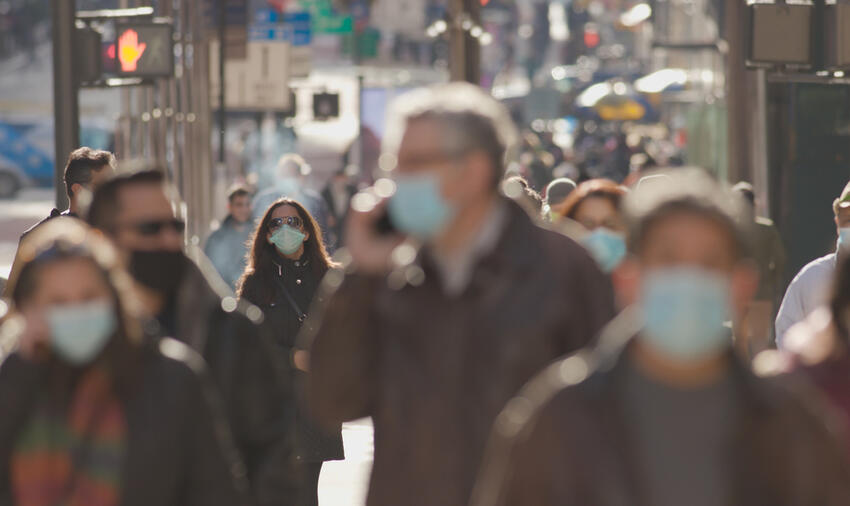People interact closer when a face mask is worn but risk compensation is at best partial
People interact closer when a face mask is worn but risk compensation is at best partial

 Image bvldone (via Shutterstock)
Image bvldone (via Shutterstock)
People interact closer when a face mask is worn
but risk compensation is at best partial
Martin Aranguren, Alice Cartaud, Ibrahima Cissé, Yann Coello
European Journal of Public Health
ckad161, Published First 17 September, doi 10.1093/eurpub/ckad161
View or Download the Paper (Open Access)
As dramatically illustrated by the coronavirus 2019 (COVID-19) pandemic, nonpharmaceutical interventions can be crucial in the effort to contain the spread of infectious diseases. During the still ongoing COVID-19 crisis, two of the most common interventions of this type have been the recommendation or mandate to wear a face mask and to keep a minimal physical distance from others. These measures are highly generic and low cost, in the sense that they can be implemented in response to a wide array of similarly transmissible infectious diseases, in the short term and with relatively modest economic effort. However, despite their clearly beneficial potential, the relationship between wearing a face mask and keeping a minimal distance from others is still an object of controversy.
The article addresses the following questions:
- Do people interact closer when the face mask is worn?
- Do people interact closer because they believe that the mask reduces the risk of contagion?
- If the mask induces people to interact closer, does the increase in risk entailed by shorter distances entirely offset the decrease in risk offered by the mask?
We performed a large field experiment on real-life interactions (n > 4500) in the streets of Paris between July and September 2021, and a controlled laboratory experiment in virtual reality in the IrDIVE Platform (Innovation Research in the Digital and Interactive Visual Environments, Tourcoing) with 64 volunteers.
Although the present report focuses on the effect of face mask use, the experiment was also conceived to test those of perceived race and social status.









